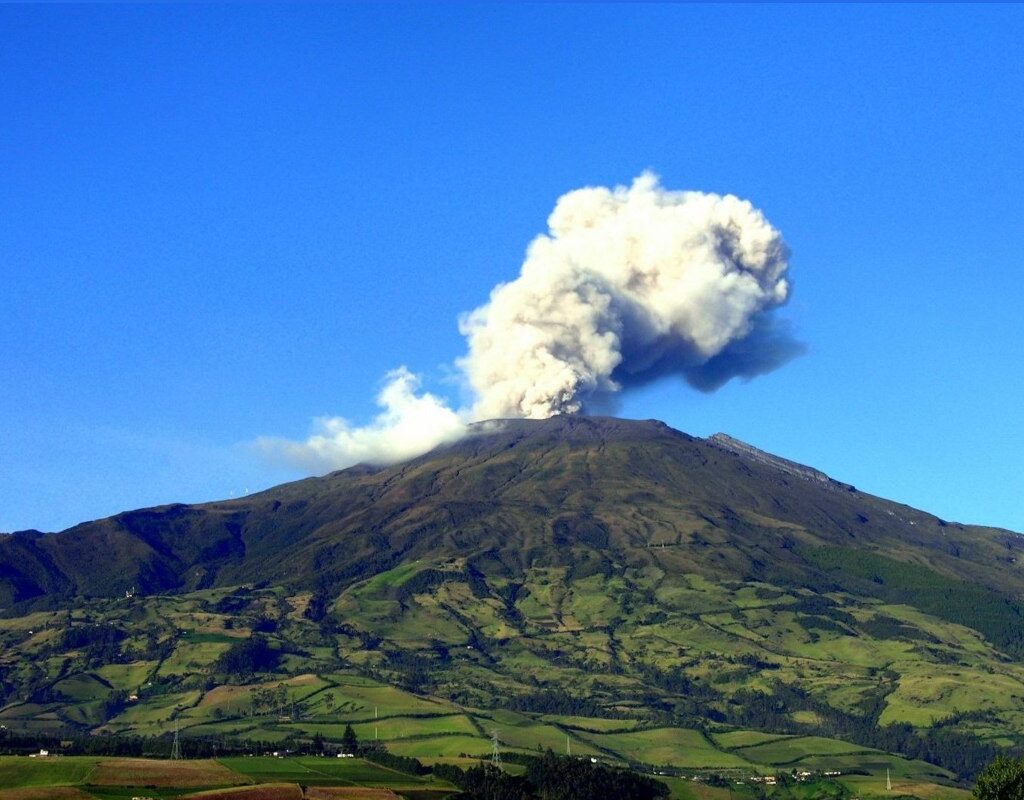The geological and human history of Colombia has been deeply influenced by the towering presence of the Galeras Volcano. This titan, rising amidst the Andean mountains, has been a source of fascination, research and sometimes, tragedy for the neighboring population.
Galeras Volcano: A Titan Amidst the Andes and Its Geographical Significance
The name Galeras is derived from its resemblance to 16th-century sailing ships known as ‘Galeras.’ But beyond its nomenclature, this stratovolcano carries a less poetic but far more daunting distinction: it is among the most active in Colombia.
According to academic records and geological service data, Galeras holds the highest number of historically reported eruptions in the country.
Geological Configuration and Location
Situated at the Nudo de los Pastos, precisely where the Central and Western mountain ranges intersect, Galeras boasts coordinates of 1°13′0″ N latitude and 77°22′0″ W longitude. Moreover, it lies atop the Cauca-Patía depression, a geologically intricate area.
A mere 6 km to the east stands the city of Pasto, from which the mighty volcano forms a clear silhouette on the horizon, resembling a watchful giant.
Several academic researchers have deduced that Galeras’s geological makeup is the result of multiple episodes of reformation. It’s closely associated with fault systems, such as Romeral and Buesaco, which have steered its behavior over millions of years.
An intriguing feature of its expansive geography is a smaller cone nested within — a “volcano within a volcano” which has been central to its most recent eruptions. Physicochemical analyses of its lava reveal that Galeras emerged between 4.8 and 1.1 million years ago, with periodic explosions that sculpted its topography.
Eruptions that Echo Through History
Historical records and geological studies confirm that Galeras’s most devastating eruptions occurred 4,500, 4,000, 2,900, 2,500 and 1,100 years ago. However, history isn’t the only witness to its wrath: a formidable eruption was recorded in 1535, marking the commencement of a series of events that continue to this day.
The 20th century, in particular, was marked by Galeras’s volatility.
Following a dormant phase after the 1936 eruption, signs of reactivation emerged in 1988. The 1989 eruptions spewed vast amounts of ash and sulfur dioxide, compromising air quality and the well-being of the surrounding communities.
On July 16, 1992, an explosive eruption shattered the volcanic dome, emitting incandescent blocks and ash over several kilometers. This eruption, coupled with subsequent events in 1993, 2000, 2004, 2005 and 2008, showcased Galeras’s unpredictability and might, prompting recurring evacuations and alerts in the region.
A particularly heartrending episode unfolded on January 14, 1993.
Six esteemed volcanologists and three observers, while studying the crater’s activity, perished in a sudden eruption. This harrowing event underscored the inherent risks faced by brave souls endeavoring to comprehend and mitigate natural calamities.
Galeras: The Silent Stirring of the Colombian Titan
The Galeras Volcano, with its grandeur and might, stands as a perpetual testament to nature’s formidable power. While advances in technology and science have enhanced our predictive and responsive capabilities, Galeras remains a latent peril for thousands in Colombia.
Galeras’s history, punctuated by periods of serenity and rage, evokes a blend of awe and reverence. It poses a challenge to science, society and especially to those residing in its looming shadow. As research persists, our collective hope is to be better poised for its next awakening.




